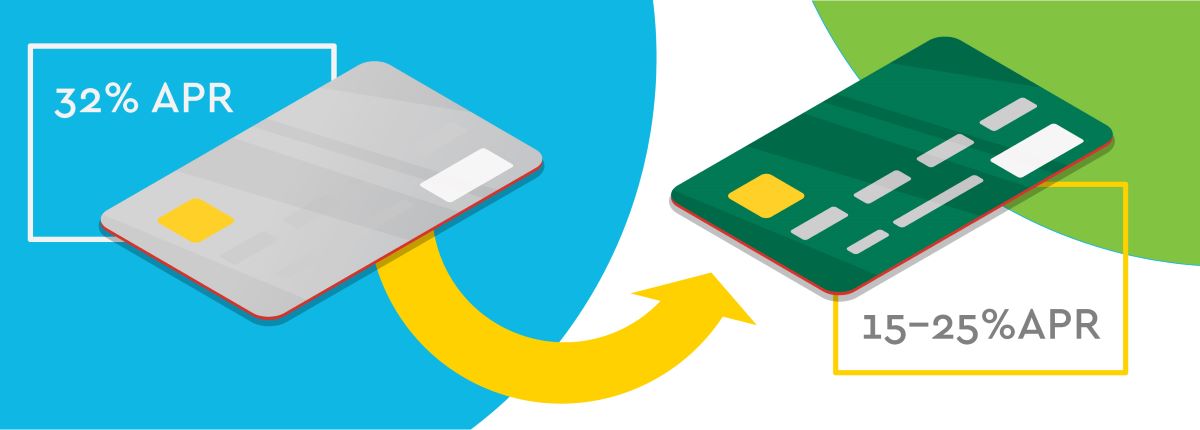

Finance
What Is Balance Transfer APR?
Published: March 3, 2024
Learn about balance transfer APR in finance. Discover how it can impact your credit card debt and financial planning. Understand the importance of managing balance transfer APR.
(Many of the links in this article redirect to a specific reviewed product. Your purchase of these products through affiliate links helps to generate commission for LiveWell, at no extra cost. Learn more)
Table of Contents
Introduction
Understanding Balance Transfer APR
When it comes to managing credit card debt, the concept of balance transfer APR (Annual Percentage Rate) can be a game-changer. Understanding how balance transfer APR works is crucial for individuals seeking to navigate the complex landscape of credit card finance. This article aims to demystify the intricacies of balance transfer APR, shedding light on its functionality, benefits, risks, and best practices for utilization.
Balance transfer APR refers to the interest rate applied to the transferred balance from one credit card to another. This financial tool allows individuals to consolidate their credit card debt by transferring it to a new card with a lower APR, often for a promotional period. By leveraging balance transfer APR, individuals can potentially save money on interest and expedite their journey toward debt freedom.
However, it’s important to approach balance transfer APR with a comprehensive understanding of its mechanics and implications. This article delves into the nuances of balance transfer APR, equipping readers with the knowledge needed to make informed financial decisions and optimize the management of their credit card debt.
Understanding Balance Transfer APR
Balance transfer APR, an acronym for Annual Percentage Rate, plays a pivotal role in the realm of credit card management. This essential financial metric determines the interest applied to the balance transferred from one credit card to another. When individuals opt for a balance transfer, they are essentially moving their existing credit card debt to a new card, typically with a lower APR. This can provide a temporary reprieve from high-interest charges, offering an opportunity to make significant progress in reducing debt.
It’s important to note that balance transfer APR is not a universal figure and can vary widely among credit card issuers. Some credit card companies offer promotional periods with 0% APR for balance transfers, providing a window of opportunity for individuals to make substantial dents in their outstanding balances without accruing additional interest. However, it’s crucial to carefully examine the terms and duration of these promotional offers, as they often come with specific conditions and time constraints.
Additionally, balance transfer APR may be subject to the creditworthiness of the individual seeking the transfer. Those with strong credit profiles may qualify for more favorable APR terms, while others may face higher rates based on their credit history and financial standing. Understanding these nuances is essential for individuals considering a balance transfer as part of their debt management strategy.
Furthermore, the concept of balance transfer APR intersects with the broader landscape of credit card finance, encompassing factors such as minimum monthly payments, fees associated with the transfer, and the potential impact on credit scores. By gaining a comprehensive understanding of balance transfer APR, individuals can make informed decisions that align with their financial goals and circumstances.
As we delve deeper into the mechanics of balance transfer APR, it becomes evident that this financial tool holds the potential to alleviate the burden of high-interest debt and pave the way for a more sustainable path toward financial freedom. However, it’s essential to approach balance transfers with careful consideration and a clear grasp of the associated terms and conditions.
How Balance Transfer APR Works
Understanding how balance transfer APR works is essential for individuals seeking to leverage this financial tool effectively. When initiating a balance transfer, the outstanding debt from one credit card is moved to another card, typically with a lower APR. This process can offer immediate relief from high-interest charges, allowing individuals to focus on reducing their debt without the added burden of compounding interest.
Upon completing a balance transfer, the transferred balance becomes subject to the APR of the new credit card. If the new card offers a promotional period with a 0% APR for balance transfers, individuals can benefit from a temporary respite from interest charges, enabling them to make more substantial strides in paying down their debt. However, it’s crucial to be mindful of the duration of the promotional period and any associated terms, as the APR may revert to a standard rate once the promotional period expires.
It’s important to note that balance transfer APR may also encompass additional fees, such as balance transfer fees, which are incurred when moving debt from one card to another. These fees are typically calculated as a percentage of the transferred amount and should be factored into the overall cost-benefit analysis of a balance transfer. By understanding the interplay between APR and associated fees, individuals can make informed decisions regarding the financial implications of initiating a balance transfer.
Furthermore, the management of payments during the promotional period is critical in maximizing the benefits of a balance transfer. Making timely and consistent payments is essential to capitalizing on the temporary relief from interest charges. Additionally, it’s advisable to refrain from making new purchases on the new credit card to avoid accumulating additional debt and diluting the focus on reducing the transferred balance.
By comprehending the mechanics of balance transfer APR and the associated considerations, individuals can harness this financial tool to alleviate the burden of high-interest debt and expedite their journey toward financial stability. However, it’s crucial to approach balance transfers with a clear understanding of the terms, potential costs, and the impact on overall debt management strategies.
Benefits of Balance Transfer APR
Balance transfer APR offers a range of potential benefits for individuals seeking to manage and reduce their credit card debt effectively. Understanding these advantages is crucial for making informed decisions about utilizing this financial tool as part of a comprehensive debt management strategy.
1. Interest Savings: One of the primary benefits of balance transfer APR is the opportunity to save on interest charges. By transferring high-interest credit card debt to a new card with a lower or 0% APR for a promotional period, individuals can significantly reduce the amount of interest accruing on their outstanding balances. This can lead to substantial savings and expedite the process of debt repayment.
2. Debt Consolidation: Balance transfer APR enables individuals to consolidate multiple credit card balances into a single account, streamlining the management of debt and potentially reducing the overall cost of interest. This consolidation can provide greater clarity and organization in debt repayment efforts, simplifying the financial landscape for individuals with multiple credit card obligations.
3. Temporary Relief: During promotional periods with 0% APR for balance transfers, individuals can experience temporary relief from interest charges, allowing them to allocate more of their payments toward reducing the principal balance. This can create a valuable window of opportunity to make significant progress in paying down debt without the obstacle of compounding interest.
4. Enhanced Financial Flexibility: By leveraging balance transfer APR, individuals can gain greater flexibility in managing their credit card debt. This can include the ability to restructure payment plans, allocate funds strategically, and optimize the utilization of available financial resources to achieve debt reduction goals.
5. Potential Credit Score Improvement: Effectively managing credit card debt through balance transfer APR can have a positive impact on an individual’s credit score. By reducing outstanding balances and demonstrating responsible debt repayment behavior, individuals may see improvements in their credit profile over time, enhancing their overall financial health.
These benefits underscore the potential value of balance transfer APR as a tool for addressing and mitigating the challenges associated with high-interest credit card debt. However, it’s essential for individuals to approach balance transfers with a clear understanding of the associated terms, potential costs, and the impact on their broader financial circumstances.
Risks of Balance Transfer APR
While balance transfer APR presents opportunities for managing credit card debt, it is important to recognize and consider the potential risks associated with this financial strategy. Understanding these risks is essential for individuals contemplating the utilization of balance transfer APR as part of their debt management approach.
1. Balance Transfer Fees: When initiating a balance transfer, individuals may incur balance transfer fees, which are typically calculated as a percentage of the transferred amount. These fees can offset the potential savings from a lower APR, particularly for individuals transferring large balances. It’s crucial to factor these fees into the overall cost-benefit analysis of a balance transfer.
2. Reverted APR: Promotional periods with 0% APR for balance transfers are temporary, and once the promotional period expires, the APR may revert to a standard rate, which could be higher than the individual’s original APR. If the transferred balance is not fully paid off during the promotional period, individuals may face higher interest charges, potentially negating the initial benefits of the balance transfer.
3. Impact on Credit Score: Initiating a balance transfer can impact an individual’s credit score. The act of opening a new credit account and transferring balances may result in a temporary dip in the individual’s credit score. Additionally, if the new credit card’s credit limit is fully utilized by the transferred balance, it can affect the individual’s credit utilization ratio, a key factor in credit score calculations.
4. Temptation to Accumulate New Debt: After transferring balances to a new card with a lower APR, individuals may feel a sense of relief and be tempted to make new purchases or accumulate additional debt. This can dilute the focus on reducing the transferred balance and lead to a cycle of persistent debt accumulation, counteracting the intended benefits of the balance transfer.
5. Overall Debt Management Strategy: While balance transfer APR can offer immediate relief from high-interest charges, it is essential to consider its alignment with an individual’s broader debt management strategy. Depending solely on balance transfers without addressing underlying financial habits and budgeting practices may lead to a cycle of transferring balances without effectively reducing overall debt.
Recognizing these risks underscores the importance of approaching balance transfer APR with a comprehensive understanding of the potential drawbacks and implications. By evaluating these risks alongside the benefits, individuals can make informed decisions that align with their financial goals and promote sustainable debt management practices.
Tips for Using Balance Transfer APR
Effectively leveraging balance transfer APR as part of a comprehensive debt management strategy requires careful consideration and strategic planning. By incorporating the following tips, individuals can optimize the benefits of balance transfer APR while mitigating potential risks and maximizing their progress toward debt freedom.
1. Thoroughly Review Terms and Conditions: Before initiating a balance transfer, carefully review the terms and conditions of the new credit card, including the duration of any promotional APR offer, reverted APR after the promotional period, and associated fees. Understanding these details is essential for making informed decisions about the potential benefits and costs of the transfer.
2. Calculate Total Cost and Savings: Conduct a comprehensive cost-benefit analysis that factors in balance transfer fees, the duration of the promotional period, and the potential interest savings. By quantifying the total cost of the transfer and comparing it to the projected interest savings, individuals can make informed decisions about the financial impact of the balance transfer.
3. Avoid New Purchases on the New Card: To maintain focus on reducing the transferred balance, refrain from making new purchases on the new credit card. Accumulating additional debt can detract from the primary goal of debt reduction and may complicate the overall debt management strategy.
4. Create a Repayment Plan: Develop a structured repayment plan to pay off the transferred balance within the promotional period, if feasible. Setting clear goals and allocating funds toward debt reduction can help individuals maximize the benefits of the temporary relief from interest charges provided by the promotional APR offer.
5. Monitor Credit Utilization and Credit Score: Keep a close eye on credit utilization and credit score changes following the balance transfer. Maintaining a healthy credit utilization ratio and monitoring any fluctuations in credit score can provide valuable insights into the impact of the transfer on overall creditworthiness.
6. Address Underlying Financial Habits: Utilize the balance transfer as an opportunity to address underlying financial habits and budgeting practices. By identifying and addressing the root causes of credit card debt, individuals can establish sustainable financial behaviors that complement the benefits of the balance transfer APR.
7. Consider Professional Financial Advice: For individuals navigating complex credit card debt scenarios, seeking guidance from financial professionals or credit counseling services can provide valuable insights and personalized strategies for leveraging balance transfer APR effectively within the broader context of financial wellness.
By integrating these tips into their approach to utilizing balance transfer APR, individuals can optimize the benefits of this financial tool while proactively managing potential risks and aligning their debt management efforts with long-term financial stability.
Conclusion
Balance transfer APR serves as a valuable financial instrument for individuals seeking to manage and reduce credit card debt. By understanding the intricacies of balance transfer APR, including its benefits, risks, and strategic utilization, individuals can make informed decisions that align with their financial goals and promote sustainable debt management practices.
When contemplating a balance transfer, it is essential for individuals to thoroughly review the terms and conditions of the new credit card, considering factors such as promotional APR duration, reverted APR, and associated fees. Conducting a comprehensive cost-benefit analysis enables individuals to assess the potential impact of the transfer on their overall financial landscape, empowering them to make strategic decisions about debt repayment.
While balance transfer APR offers opportunities for interest savings and debt consolidation, it is crucial to remain vigilant about potential risks, such as balance transfer fees, reverted APR, and the impact on credit scores. By incorporating prudent financial habits, creating structured repayment plans, and monitoring credit utilization, individuals can navigate the complexities of balance transfer APR with confidence and foresight.
Ultimately, the effective utilization of balance transfer APR requires a holistic approach to debt management, encompassing not only the tactical aspects of the transfer but also the underlying financial behaviors and habits that contribute to sustainable financial wellness. By addressing these foundational elements and integrating strategic tips for utilizing balance transfer APR, individuals can optimize the benefits of this financial tool while mitigating potential risks and accelerating their journey toward debt freedom.
Embracing a proactive and informed approach to balance transfer APR empowers individuals to take control of their credit card debt, cultivate responsible financial practices, and pave the way for a more secure and stable financial future. By leveraging the insights and strategies outlined in this article, individuals can navigate the complexities of balance transfer APR with clarity and confidence, positioning themselves for long-term financial success.














